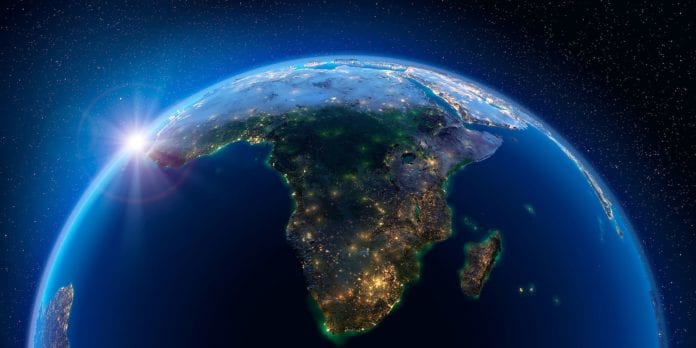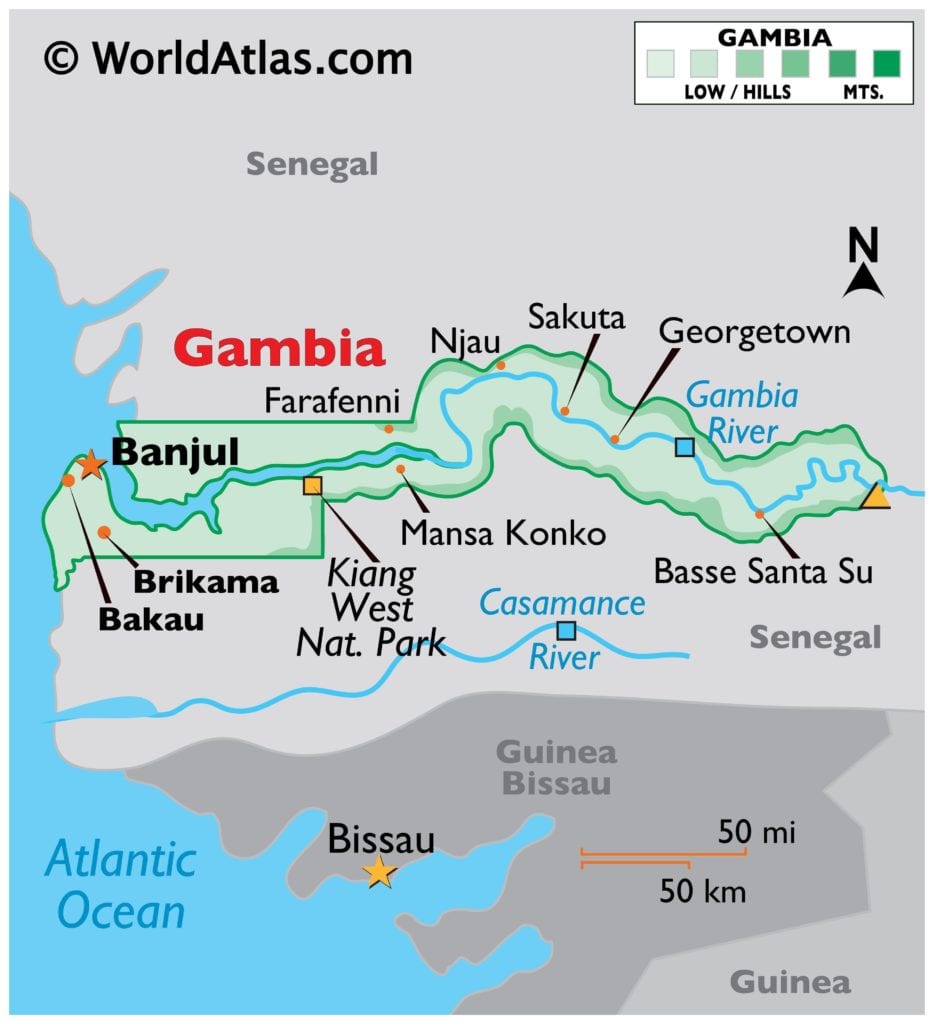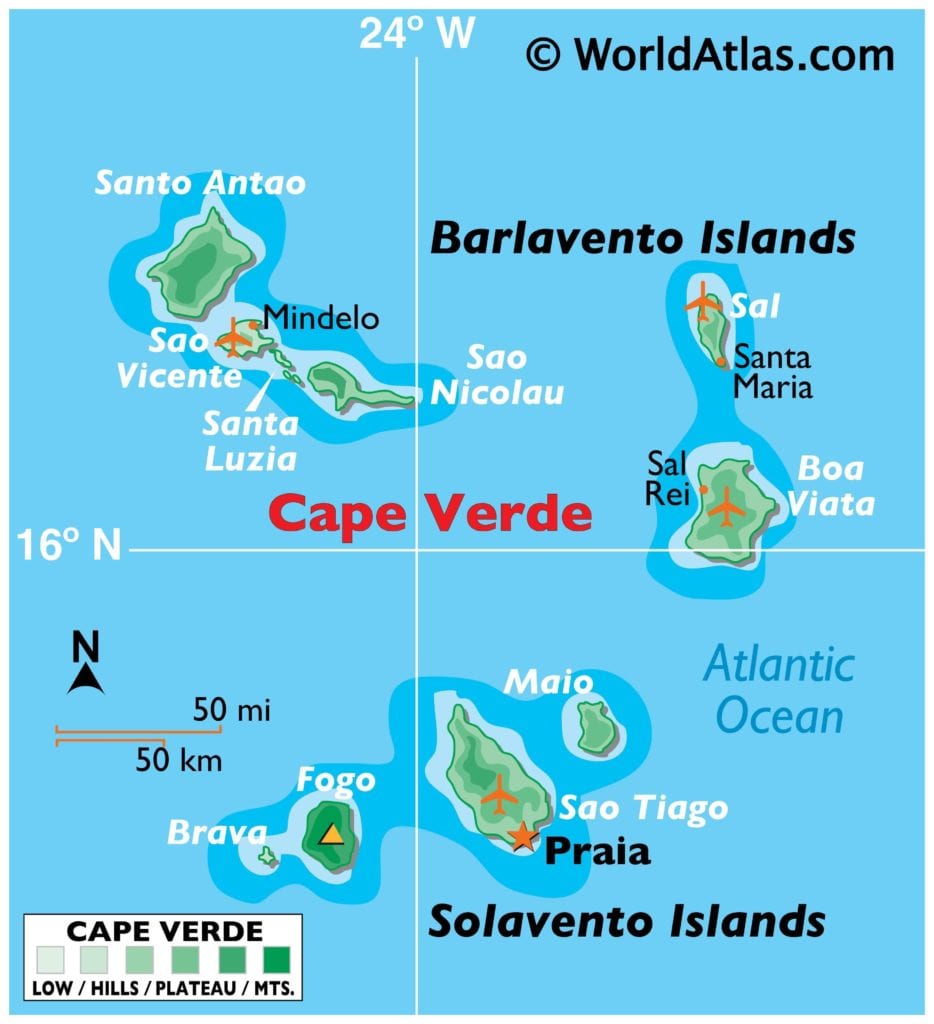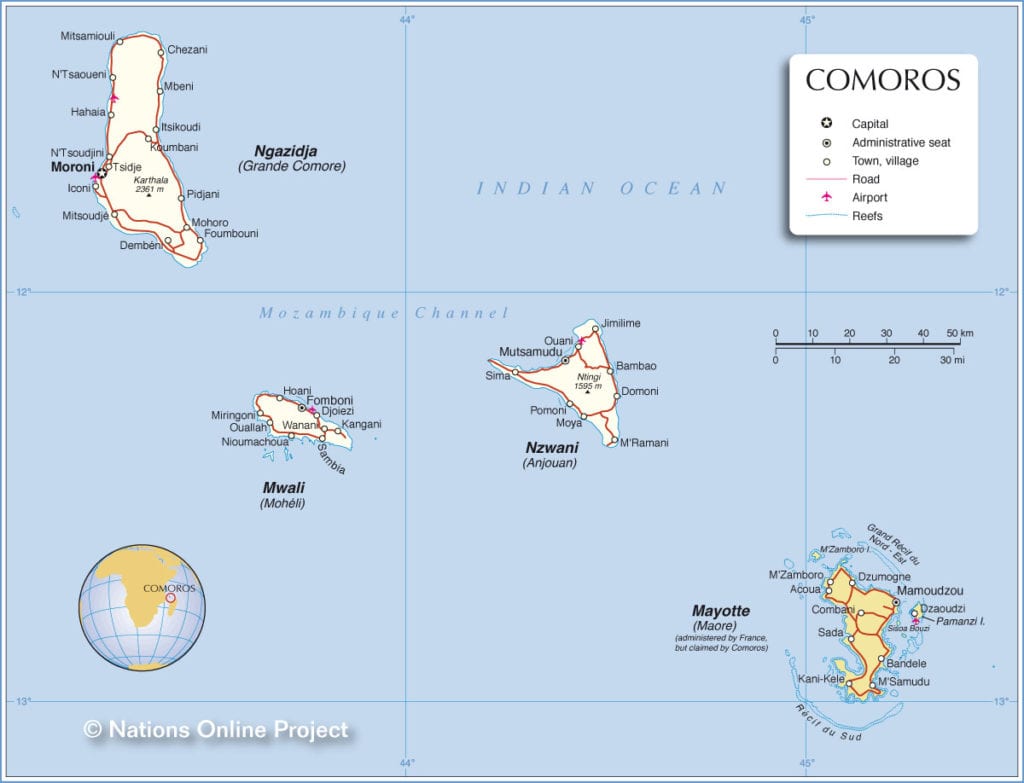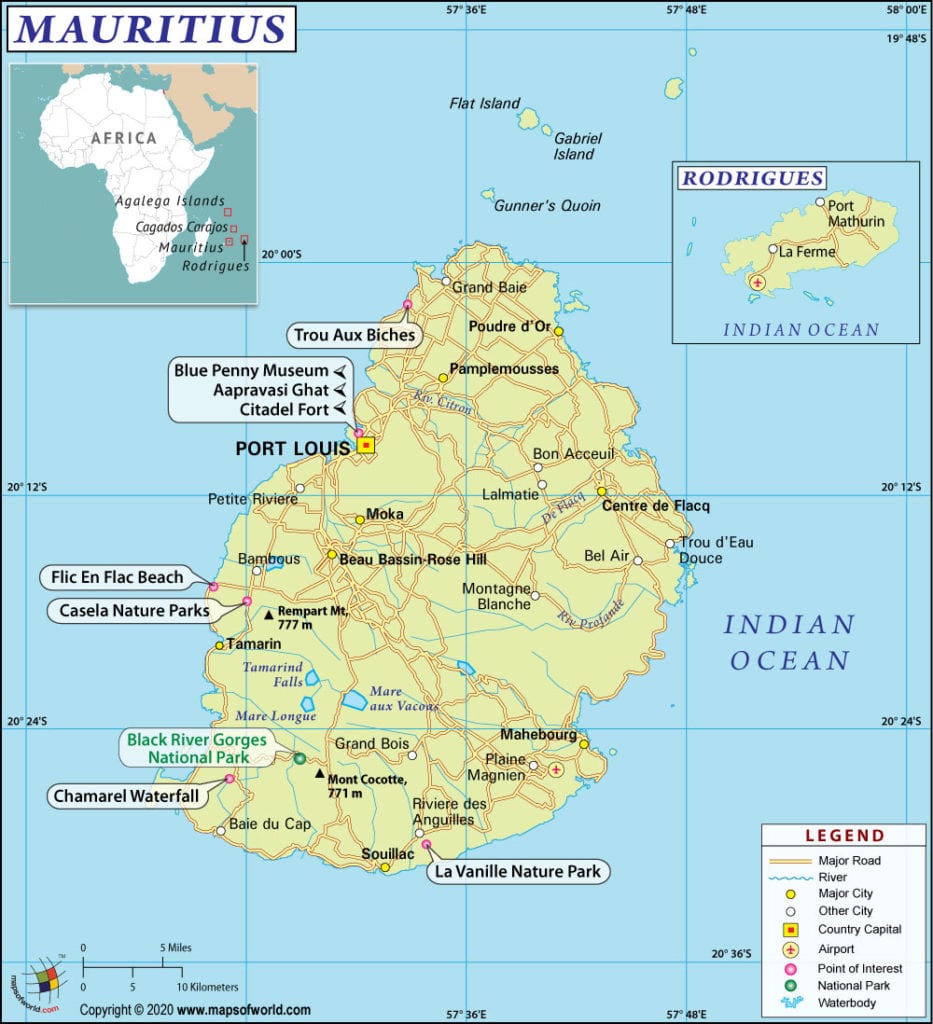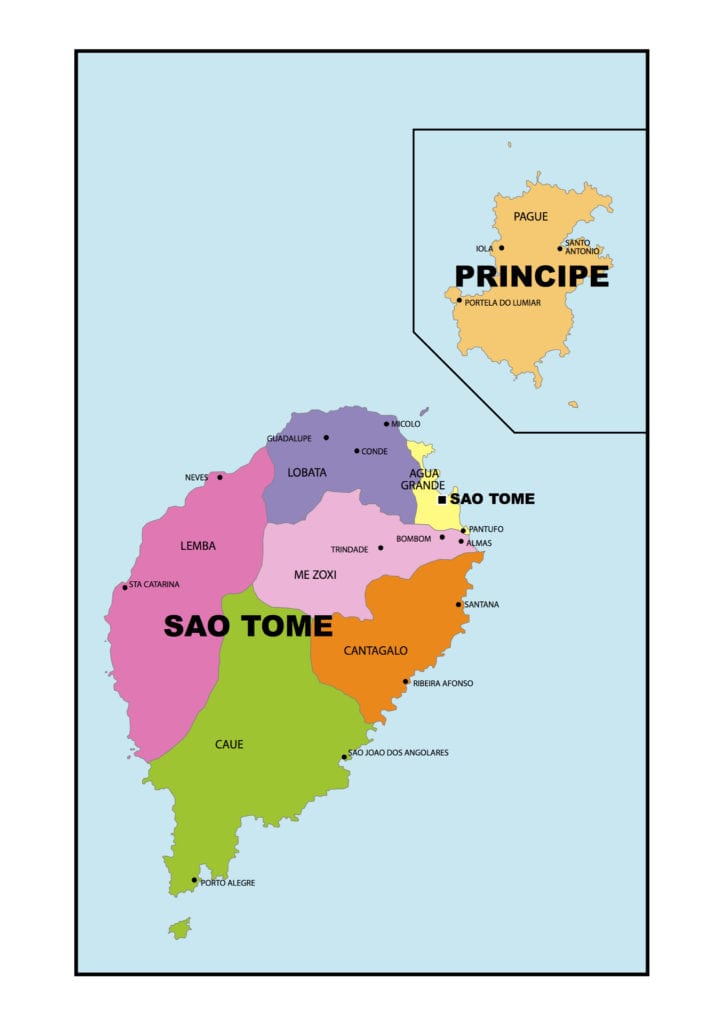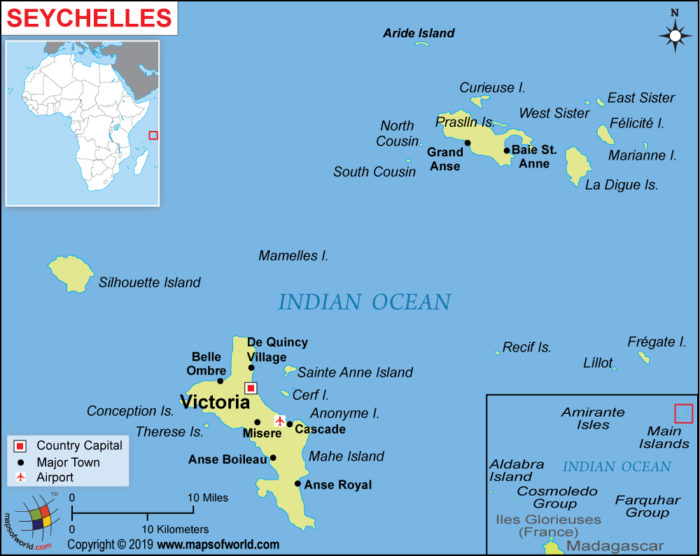Home to over 1.3 billion people, Africa is the second-largest and second-most-populous continent in the world, just a little under Asia. Africa holds 16.72% of the world’s entire population, occupies about 20% of the earth’s landmass, covers about 6% of the earth’s total surface area, and boasts a total landmass of 30.37 million Sq. kilometers. Africa can swallow up China, India, United States, Japan, United Kingdom and still have space for over 10 more large European countries.
Notwithstanding the massive landmass of the continent, there are incredibly small countries in the continent. There are 48 mainland countries and six island nations in Africa. The majority of these island nations account for most of the smallest countries in Africa. We will be looking at the ten smallest countries in Africa, both in size and population.
Ten Smallest Countries In Africa By Area
10. Burundi
- Km-square coverage: 27,830 km Sq.
- Population: 11,890,784
- Geographical location: East-Central Africa
- Major water landmark: Lake Tanganyika
- Major Tourist Destinations: Kigwena Natural Forest, Ruvubu National Park, Mount Heha, Saga Beach, Chutes De La Karera, Gitega National Museum, Lake Tanganyika, Gishora, Kagera Waterfalls, Gasumo
Situated in East-Central Africa, Burundi is one of the smallest countries in Africa. According to Britannica, the borders of this landlocked country were not determined by colonial rulers. It was an independent kingdom for over 500 years, consisting of the Hutu, Tutsi, and Twa people until it was colonized in the 20th century. The fact that it was a kingdom that was later turned into a country could be a contributing factor to its relatively small total land area. Although small in area, the country is densely populated. It has a very hilly topography, causing an uneven population distribution.
Burundi has one of the highest population density rates in Africa. Since it gained independence from Belgium in 1962, the country has been plagued with inter-ethnic conflicts between the Hutus and the Tutsis, both ethnic groups are the majority in Burundi. The Hutu-Tutsi civil war led to a tremendous loss of lives and property over the decades.
9. Rwanda
- Km-square coverage: 26,798 km Sq.
- Population: 12,952,218
- Geographical location: East Africa
- Major water landmark: Lake Kivu
- Major Tourist Destinations: Volcanoes National Park, Kigali Genocide Memorial, Nyungwe National Park, King’s Palace Museum, Lake Kivu, Akagera National Park, Gorilla Guardians village, Ethnographic Museum, Mount Karisimbi, Kigali
Just like Burundi, Rwanda is a landlocked East African country. In fact, Burundi and Rwanda are ‘brothers’. The two countries have the same ethnic groups of Hutu, Tutsi, and Twa, and were both ruled by Belgium as Ruanda-Urundi. Both countries have also suffered Hutu-Tutsi Civil wars, especially the Rwandan genocide of 1994 which led to massive loss of lives.
On the 1st of July 1962, Rwanda separated from Burundi and gained independence. Known as the land of a thousand hills due to its mountainous topography, which also contributed to its relatively small total land area, Rwanda is one of the smallest countries in Africa. The country is also one of the most densely populated.
8. Djibouti
- Km-square coverage: 23,200 km Sq.
- Population: 1,000,304
- Geographical location: East Africa
- Major water landmark: Lake Assal
- Major Tourist Destinations: Lake Assal, Moucha Island, Khor Ambado Beach, Maskali Island, Day Forest National Park, Lake Abbe, Tadjoura City, Hanle Plain, Tropical Aquarium, Djibouti Central Market
Formerly known as French Somaliland, Djibouti is located in the Horn of Africa. The location of this geothermal country lies between the Gulf of Aden and the Red Sea. It is characterized by both rugged mountainous terrain and desert plains for its topography. All of these contribute to its small landmass. Its small landmass is also further divided by the Gulf of Tadjoura which empties into the Gulf of Aden.
Djibouti also witnesses seismic activity, tremors, with basalt covering most part of its terrain due to volcanic activity. The Ardoukoba Volcanic eruption of November 1978, which although was not fatal or damaging, led to major seismic activities, drawing the attention of volcanologists worldwide. With a landmass area slightly over 23,000 Sq. Km, Djibouti is the 8th smallest country in Africa.
7. Swaziland/Eswatini
- Km-square coverage: 17,364 km Sq.
- Population: 1,170,499
- Geographical location: Southern Africa
- Major water landmark: Great Usutu River
- Major Tourist Destinations: Lebombo Mountains, Ezulwini Valley, Mbuluzi Game Reserve, Milwane Wildlife Sanctuary, Hlane National Park, Mkhaya Game Reserve, Swazi Market, Lobamba, Mantenga Reserve, Malolotja Nature Reserve
Formerly known as Swaziland, but renamed the Kingdom of Eswatini in 2018 by King Mswati III during his 50th birthday celebration which was also the year of the 50th anniversary of the country, Eswatini is also a landlocked country, which got its name from the Bantu tribe of Swazi. It is characterized by 4 seemingly complex topographic regions, namely: Highveld, Middleveld, Lowveld, and Lebombo.
Most of the country’s population live in the Middleveld. The Highveld is mountainous, the Lowveld which is also called Bushveld is a seeming savannah and the Lebombo is the riverine areas. Eswatini is one of the smallest countries in Africa but has one of the highest HIV/AIDS infection rates. 25% of its adult population are reported to be battling with the disease.
6. The Gambia
- Km-square coverage: 10,380 km Sq.
- Population: 2,474,524
- Geographical location: West Africa
- Major water landmark: The Gambia River
- Major Tourist Destinations: Kunta Kinteh Island, Abuko Nature Reserve, Bijilo Forest Park, Kotu Beach, River Gambia National Park, Bakau Fish Market, Katchikally Crocodile Pool, Stone Circles Of Senegambia, Albert Market, Makasutu Culture Forest
Commonly referred to as the smiling coast of Africa, The Gambia is one of the smallest countries in Africa and the smallest mainland country in Africa. Its peculiar shape and small size, which is a long narrow strip of land, surrounded by Senegal, is a result of territorial compromise by Britain during the 19th century. The lower Gambia River territory was under British control, while Senegal was a French Colony.
The short-lived Senegambia Confederation of 1982 to 1989 was for the purpose of unification. However, Gambia has remained on its own as an independent country, although small but densely populated. It is the ancestral home of Kunta Kinteh, the main character in Roots. The Gambia River runs through the entire landmass of The Gambia.
5. Cape Verde
- Km-square coverage: 4,033 km Sq.
- Population: 561,182
- Geographical location: West African Island Archipelago, situatedin The Atlantic Ocean
- Major water landmark: Atlantic Ocean
- Major Tourist Destinations: Buracona, Pico Do Figo, Sal, Santa Maria, Praia, Sal Rei, Mindelo, Riberia Grande, Tarrafal, Maio
Also called Cabo Verde, Cape Verde is an archipelagic country consisting of 9 inhabited islands and one uninhabited island. Some of the islands are very sandy, e.g Boa Vista, Some are very rocky and mountainous, e.g Fogo. The soil in Cape Verde is volcanic, with lots of Basalt and Arid Land. The country is one of the smallest in Africa due to the fact that it is an island and it is also sparsely populated. This former Portuguese colony is a major tourist destination in Africa.
4. Comoros
- Km-square coverage: 2,235 km Sq.
- Population: 869,601
- Geographical location: East African Island Archipelago, Situated In The Indian Ocean
- Major water landmark: Indian Ocean
- Major Tourist Destinations: Moheli Marine Park, Lac Niamawi, Mount karthala, Lac Sale, Shirazi Mosque, Mitsamiouli Galawa Beach, Dziancoudre Waterfall, Chomoni And Bouni Beach, Anjouan, Mahore
The 4th smallest country in Africa is the archipelagic nation of Comoros. It is a volcanic island called the perfumed islands for its scenic beauty and plant life. Comoros consists of Four Main Islands that are situated between Madagascar and the southeast African mainland, which combine four distinct influences of Africa, Arabia, Malagasy, and French. These four islands; Grand Comore, Moheli, Anjouan, and Mayotte, emerged from the floors of the Indian Ocean due to volcanic activity.
Grand Comore is the biggest island among the four while Moheli is the smallest. Mayotte the oldest of the Islands, although claimed by Comoros, is still being administered by France.
3. Mauritius
- Km-square coverage: 2,040 km Sq.
- Population: 1,271,768
- Geographical location: East African Island Nation, situated in The Indian Ocean
- Major water landmark: Indian Ocean
- Major Tourist Destinations: Mauritius Island, Black River Gorges National Park, Chamarel Seven Colored Earth Geopark, Ile Aux Cerfs, Flic En Flac Beach, Port Louis, Belle Mare, Tamarin Beach, Underwater Waterfall, Grand Baie
The only African country with Hinduism as the major religion, Mauritius is the third smallest country in Africa. Surrounded by coral reefs, Mauritius is of volcanic origin. It comprises of Agelega, St. Brandon, Rodrigues, and Mauritius Islands, which are a part of the Mascarene Islands. Mauritius is densely populated despite its small size. It is regarded as one of the nations with the highest population density in the world. Mauritius also emerged as a result of underwater volcanic eruptions and is surrounded by mountain ranges. The East African country is a major tourist destination.
2. São Tomé and Principe
- Km-square coverage: 964 km Sq.
- Population: 222,639
- Geographical location: Gulf Of Guinea, Central Africa
- Major water landmark: Gulf Of Guinea
- Major Tourist Destinations: Banana Beach, Marco Do Equador, Pico Cao Grande, Bom Bom Island, Lagoa Azul, Obo National Park, Principe Island, Sao Tome Birdwatching, Boca de Inferno
The rocky archipelagic Islands of Sao Tome and Principe is the second smallest country in Africa, with Sao Tome being the larger of the two. It is located off the coast of Gabon. it also has a very sparse population. The country was a Portuguese colony until independence in 1975. The country has very volcanic soil, as it was formed about 30 million years ago from volcanic activity.
1. Seychelles
- Km-square coverage: 451 km Sq.
- Population: 98,872
- Geographical location: East African Island Nation, situated in the Indian Ocean
- Major water landmark: Indian Ocean
- Major Tourist Destinations: Mahe Island, Seychelles Market, Victoria, National Marine Park, Natural History Museum, Sri Navasakthi Vinayagar Temple, Vallée de Mai Reserve, Aride Island Nature Reserve, Anse Lazio
With a total of 115 Islands, the archipelagic country of Seychelles is the smallest country in Africa and was once a transit point for trade between Africa and Asia. This major tourist destination suffered a cyclone in 2013, which led to the destruction of dozens of houses.
Seychelles has a rocky terrain that is characterized by boulders and hills. Its capital, Victoria, is also its largest city. The constitution of Seychelles lists the islands in the nation as 155 and not 115. However, the majority of the islands in the country are uninhabited, with Mahe, the largest island being one of the most populated. Seychelles was a British colony but gained independence in 1976.
Ten Smallest Countries In Africa By Population
Africa is projected to be populated with over 2 billion people by the year 2050. Being the second most populous continent in the world, there are a lot of countries in Africa with large populations. For example, Nigeria is the most populous black nation in the world with over 200 million inhabitants. However, there are also countries in Africa with a small population. Most of these least populated countries in Africa are also the smallest countries. For example, Seychelles is the smallest country in Africa both in area/size and population.
10. Lesotho
- Population: 2,156,917
- Km-square coverage: 30,355 Km Sq.
- GDP: $2.46 Billion (2020)
- Geographical location: Southern Africa
- Major water landmark: Orange River
- Major Tourist Destinations: Katse Dam, Maletsunyane Falls, Maluti Mountains, Kome Caves, Thaba-Bosiu, Sehlabathebe National Park, Semonkong, Liphofung, Leribe, Mohale
Protected from encroachment by the mountains that surround it, Basutoland, now the Kingdom of Lesotho is the 10th least populated country in Africa. This southern African country is also referred to as the Kingdom in the Sky due to its elevation above sea level. Lesotho is the only country in the world to have an elevation that is above 1000m. This landlocked country is completely surrounded by South Africa, and with a population of slightly above 2.1 million, Lesotho is one of the smallest countries in Africa by population.
Despite being one of the least populated, it also has a very high population density, with about 68 people per square kilometer, especially in the western lowlands. About two-thirds of this country is mountainous, which is a contributing factor to its population. Lesotho has a slow population growth rate compared to other African countries. AIDS and infant mortality rates are very high in Lesotho and this is a contributing factor to its low population. Emigration is also a factor to be considered, as a large number of Lesotho males have migrated to nearby South Africa in search of Jobs. Lesotho’s HIV/AIDS prevalence is the second highest in the world and it has the highest tuberculosis incidence in the world.
9. Guinea-Bissau
- Population: 1,968,001
- Km-square coverage: 36,125 km Sq.
- GDP: $1.339 billion (2019)
- Geographical location: West Africa
- Major water landmark: Atlantic Ocean
- Major Tourist Destinations: Orango National Park, Rubane, Bubaque Island, Dulombi-Boe National Park, Lagoas Cufada Natural Park, Cacheu, Bolama Island, Varela, Bissau, Joao Vieira Island
With almost 2 million inhabitants, the West African country of Guinea-Bissau is the 9th smallest African country in terms of population. Part of the reasons for the country’s low population is the over 10 year-long armed conflicts of 1964 to 1974 for independence when about one-third of Guinea Bissau’s rural population fled as refugees to neighboring countries. The population growth of Guinea Bissau is also low. After its independence in 1974, Guinea Bissau suffered a civil war from 1998 to 1999, further depleting its population.
A former Portuguese colony, Guinea Bissau is the only West African country that fought its way to independence. The country’s population density is about 70 people per square kilometer with most of the population living in the coastal region.
8. Equatorial Guinea
- Population: 1,442,446
- Km-square coverage: 28,050 km Sq.
- GDP: $12.142 Billion (2019)
- Geographical location: Central Africa
- Major water landmark: The Mbini River
- Major Tourist Destinations: Monte Alén National Park, Malabo, Moca, San Antonio de Ureca, Luba, Djibloho, Mbini, Annobon, Altos de Nsork National Park, Monte Temelón Natural Reserve
The only Spanish-speaking country in Africa is the 8th smallest country in terms of population in Africa. Situated on the west coast of central Africa, the country got its name because it’s close to both the Equator and the Gulf of Guinea. With a population of fewer than 2 million people, the tumultuous post-independence regime of Francisco Macías Nguema, characterized by repressive killings and slave-like conditions in the early 1970s, led to the departure of over 100 thousand people from the country in the late 1970s, causing a reduction of about one-third of its population. Also, in the 1960s and earlier, Nigerian plantation laborers were present in the country, they also repatriated to Nigeria, these are some of the contributing factors of Equatorial Guinea’s low population. However, Equatorial Guinea’s population is growing at a rate of 2.8% annually.
With a population density of about 52 people per square kilometer, Equatorial Guinea consists of five islands; Bioko, formerly known as Fernando Po, Corisco, Annobon, Great Elobey, and Little Elobey, and Rio Muni which is not an island but situated in the mainland of the African continent. The capital city of Malabo sits on Bioko.
7. Mauritius
- Population: 1,271,768
- Km-square coverage: 2,040 km Sq.
- GDP: $14.391 Billion (2019)
- Geographical location: East African Island Nation, Situated In The Indian Ocean
- Major water landmark: Indian Ocean
- Major Tourist Destinations: Mauritius Island, Black River Gorges National Park, Chamarel Seven Colored Earth Geopark, Ile Aux Cerfs, Flic En Flac Beach, Port Louis, Belle Mare, Tamarin Beach, Underwater Waterfall, Grand Baie
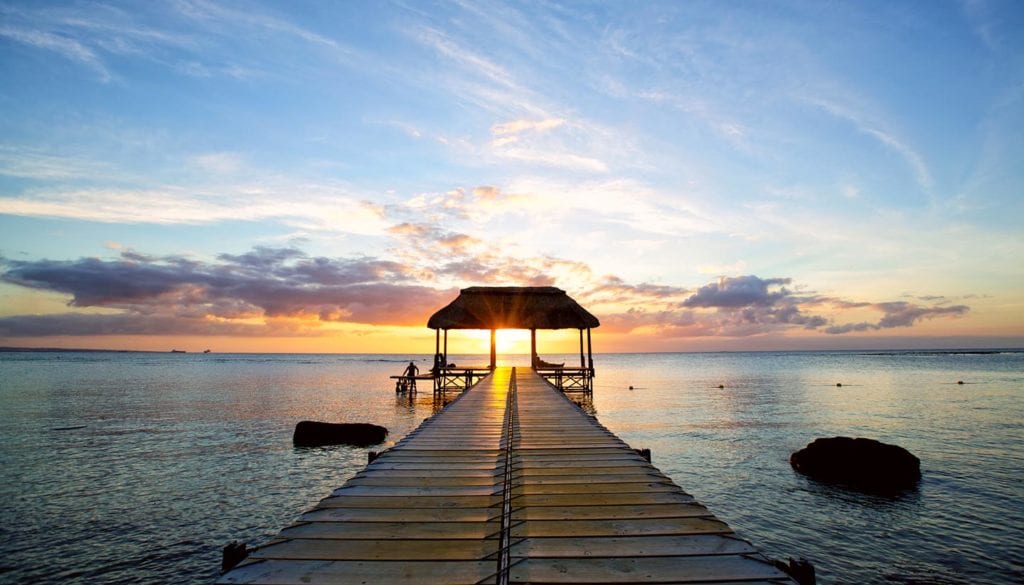
With over 600 people per square kilometer, Mauritius is densely populated. With a population of a little over 1.2 million inhabitants, Mauritius is the 5th smallest African country in terms of population. Home to the now extinct flightless bird, Dodo, this island is a major tourist attraction. Emerging through an Indian Ocean volcanic activity, Mauritius owes its low population to lack of space, heightened development rate, as well as emigration to Britain and France. Mauritius’s population is expected to witness a decline according to the world atlas as the birth rate of the island is below average.
6. Eswatini/Swaziland
- Population: 1,170,499
- Km-square coverage: 17,364 km Sq.
- GDP: $4.711 Billion (2018)
- Geographical location: Southern Africa
- Major water landmark: Great Usutu River
- Major Tourist Destinations: Lebombo Mountains, Ezulwini Valley, Mbuluzi Game Reserve, Milwane Wildlife Sanctuary, Hlane National Park, Mkhaya Game Reserve, Swazi Market, Lobamba, Mantenga Reserve, Malolotja Nature Reserve
On the year of the 50th anniversary of Swaziland’s independence and the 50th birthday of King Mswati III, the country got the new name – Kingdom Of Eswatini. With about 68 people per square kilometer, Eswatini, although densely populated, is the 6th smallest country in Africa by population.
The Kingdom Of Eswatini is a landlocked country surrounded by South Africa. With a population of slightly over a million people, Eswatini’s population is affected by low life expectancy, as well as the high prevalence rate of HIV/AIDS among the adult population. With about 25% of the adult population infected with the disease, Eswatini has one of the highest HIV/AIDS prevalence which is greatly affecting its population growth.
5. Djibouti
- Population: 23,200 km Sq.
- Km-square coverage:1,000,304
- GDP: $3.325 Billion (2019)
- Geographical location: East Africa
- Major water landmark: Lake Assal
- Major Tourist Destinations: Lake Assal, Moucha Island, Khor Ambado Beach, Maskali Island, Day Forest National Park, Lake Abbe, Tadjoura City, Hanle Plain, Tropical Aquarium, Djibouti Central Market
With a population of about 1 million people, this country located in the Horn of Africa is one of the smallest African countries based on population. With extreme terrains of both rocky and desert territories, coupled with seismic volcanic geothermal activities in the country, Djibouti is both small in size and population. Although there is no recorded case of fatal volcanic eruptions in recent years, the terrain of Djibouti is of great interest to volcanologists. The country’s population has been declining since the 1980s with a population density of about 38 people per kilometer square.
4. Comoros
- Population: 869,601
- Km-square coverage: 2,235 km Sq.
- GDP: $ 1.166 Billion (2019)
- Geographical location: East African Island Archipelago, Situated In The Indian Ocean
- Major water landmark: Indian Ocean
- Major Tourist Destinations: Moheli Marine Park, Lac Niamawi, Mount karthala, Lac Sale, Shirazi Mosque, Mitsamiouli Galawa Beach, Dziancoudre Waterfall, Chomoni And Bouni Beach, Anjouan, Mahore
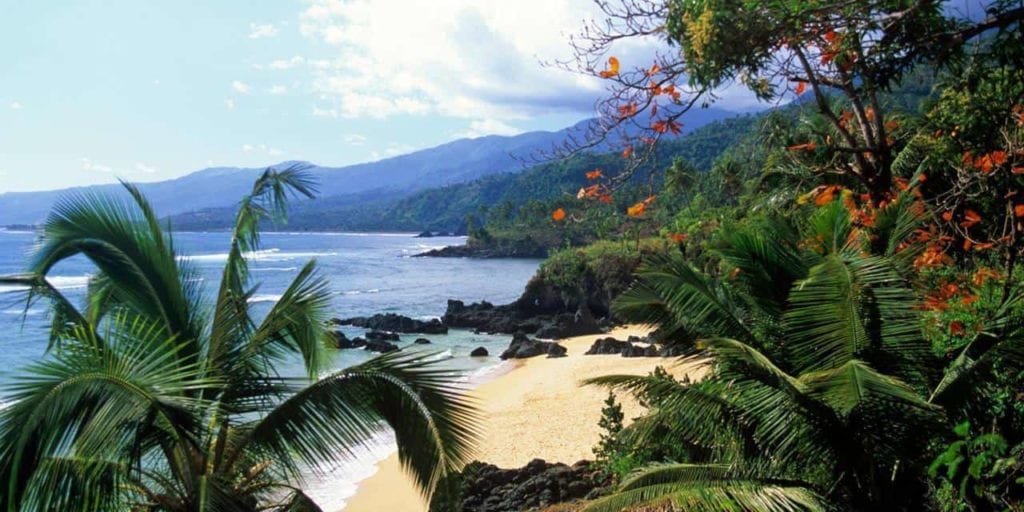
Consisting of four Islands, Comoros is an archipelagic country with less than a million inhabitants. The 4th smallest country in Africa both in size and population, Comoros is also a volcanic nation. The birth and death rates in Comoros are equally high, but infant mortality is a major problem, thereby contributing to the low population growth.
Comoros has a population density of 428 people per kilometer square.
3. Cape Verde
- Population: 561,182
- Km-square coverage: 4,033 km Sq.
- GDP: $ 1.982 Billion (2019)
- Geographical location: West African Island Archipelago, Situated In The Atlantic Ocean
- Major water landmark: Atlantic Ocean
- Major Tourist Destinations: Buracona, Pico Do Figo, Sal, Santa Maria, Praia, Sal Rei, Mindelo, Riberia Grande, Tarrafal, Maio
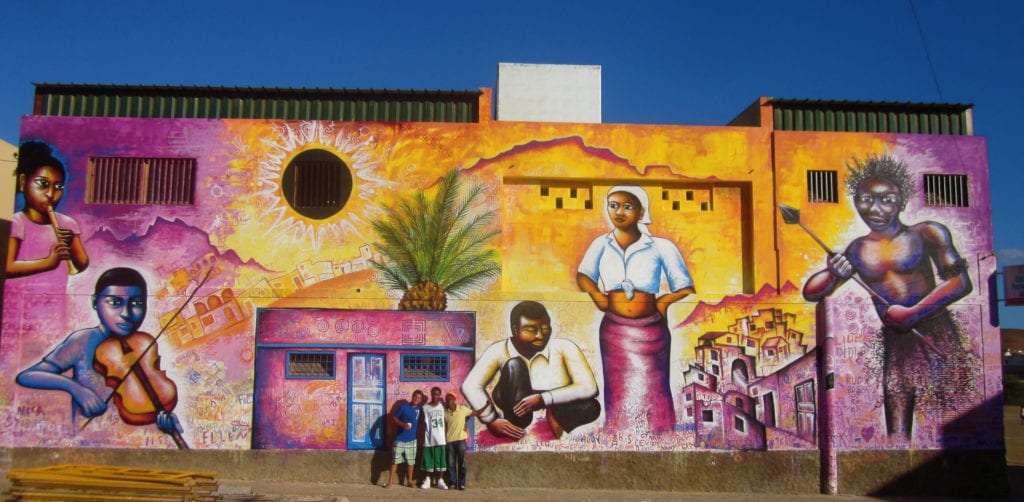
With a little over half a million inhabitants, Cape Verde is the third-smallest African country by population and the fifth smallest by size. With a population density of about 138 people per kilometer square, Cape Verde’s low population growth rate can be attributed to most of its male population emigrating abroad and low birth rate. It is reported that diasporic Cape Verdeans outnumber the population in Cape Verde.
2. São Tomé and Principe
- Population: 222,639
- Km-square coverage: 964 km Sq.
- GDP: $ 418.6 Million (2019)
- Geographical location: Gulf Of Guinea, Central Africa
- Major water landmark: Gulf Of Guinea
- Major Tourist Destinations: Banana Beach, Marco Do Equador, Pico Cao Grande, Bom Bom Island, Lagoa Azul, Obo National Park, Principe Island, Sao Tome Birdwatching, Boca de Inferno
This is the second smallest African country both in size and population. With a population of two hundred thousand people, the archipelagic islands have a population density of about 207 people per square kilometer. However, only 5% of the country’s population live in Principe. The soil of the island is also very volcanic. Sao Tome has an impressive population growth rate although not as much as other sub-Saharan countries.
1. Seychelles
- Population: 98,872
- Km-square coverage: 451 km Sq.
- GDP: $1.703 Billion (2019)
- Geographical location: East African Island Nation, situated in the Indian Ocean
- Major water landmark: Indian Ocean
- Major Tourist Destinations: Mahe Island, Seychelles Market, Victoria, National Marine Park, Natural History Museum, Sri Navasakthi Vinayagar Temple, Vallée de Mai Reserve, Aride Island Nature Reserve, Anse Lazio
The smallest country in Africa in size and population is Seychelles. A major tourist destination, Seychelles’ population is less than a hundred thousand people. The population density of the country is about 214 people per square kilometer. Space constraints, slow growth rate, and high development rate are the contributing factors to the low population in Seychelles.
Seychelles consists of 115 islands, however, most of the lands in the country are uninhabited.
